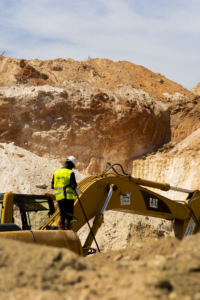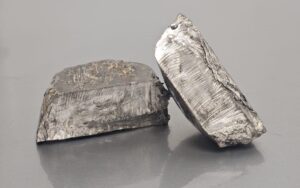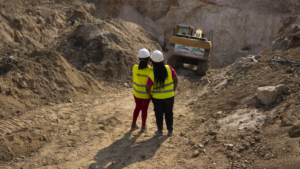Introduction
Lithium ore mining has been a global practice for centuries. This blog post will explore the historical and statistical aspects of lithium ore mining, with a focus on Africa, particularly Nigeria. We will discuss the role of Nigerian miners in global lithium production, examine trends in African mining, and address the challenges faced by miners in Nigeria and other African countries.
Historical Data
- Historical records indicate that lithium mining dates back centuries, with evidence of its extraction in various parts of the world.
- However, the systematic exploration and commercialization of lithium mining began in the 20th century with the increasing demand for lithium-ion batteries.
- According to historical data, lithium mining has significantly contributed to the economies of countries such as Australia, Chile, and the United States.
- The United States was once the leading lithium producer, with notable reserves in places like North Carolina and South Dakota. However, it has been surpassed by Australia and Chile in recent years.
- Africa, including countries like Zimbabwe and Nigeria, has also made progress in lithium mining and has the potential to contribute significantly to the global supply.
Global Distribution of Lithium Ore Deposits
Lithium deposits are found worldwide, contributing to global production. One significant source is spodumene, a mineral found in rock formations called pegmatites. Spodumene mining extracts the ore, which contains high lithium content, followed by processing to produce spodumene concentrate. Australia is the leading producer of lithium, followed by Chile, China, and Argentina. However, countries like the United States, Canada, Brazil, and Zimbabwe also contribute to the global supply. Understanding these deposits is crucial for assessing availability and accessibility, supporting informed decision-making.
The Discovery and Importance of Lithium
Lithium, a chemical element, was discovered in 1817 and named after the Greek word “lithos” meaning stone due to its presence in rocks and minerals. It gained importance in industries due to its unique properties, especially in lithium-ion batteries used in electronic devices and electric vehicles. This led to the development of spodumene mining as a major source of lithium ore. With the increasing demand for lithium, ensuring a reliable supply and sustainable mining practices becomes crucial.
History of Lithium Mining in Different Regions
Lithium mining has shaped the economies and industries of various countries. Australia’s Western Australia is known for its abundant lithium deposits, while Chile has the largest lithium reserves in the Salar de Atacama. The United States and Canada also have significant lithium resources. Other countries like China, Argentina, Zimbabwe, and Nigeria have made progress in lithium mining.
- Historical statistical data reveals that as of 2020, Australia had the largest proven lithium reserves, accounting for approximately 48% of the global total, followed by Chile with 28% and China with 10%.
- In recent years, African countries like Zimbabwe, Nigeria, and the Democratic Republic of Congo have emerged as potential lithium mining destinations due to the discovery of significant lithium reserves.
- Statistical data from recent years demonstrates an increase in lithium production in these regions, further diversifying the global supply chain.
Current State of Lithium Production
Driven by the demand for lithium-ion batteries, lithium production is booming worldwide. Australia remains the largest producer, followed by Chile. Other countries, including China, Argentina, Zimbabwe, and Nigeria, are making strides, while the United States and Canada tap into their own resources. This current state of lithium production indicates the rising demand, particularly in the electric vehicle industry. However, it also raises environmental concerns that need to be addressed for sustainable growth.
- According to recent statistical data, Australia produced approximately 42,000 metric tons of lithium in 2020, accounting for approximately 50% of global production.
- Chile, the second-largest producer, produced around 20,000 metric tons, accounting for approximately 24% of global production.
- China, Argentina, and Zimbabwe contributed around 8%, 6%, and 5% respectively to global lithium production in 2020.
The Rise of Lithium Demand in the Electric Vehicle Industry
The demand for lithium has skyrocketed due to the rise of electric vehicles. Lithium-ion batteries are crucial for their efficiency and reliability. Tesla, Nissan, and General Motors have made significant investments, leading to increased demand for lithium. This surge in demand has driven mining activities, particularly in Australia, Chile, China, and other emerging lithium mining regions. The impact on lithium demand is expected to triple by 2025. This growth brings opportunities for the industry but also requires addressing sustainability and environmental concerns.
- Statistical data indicates that the global demand for lithium-ion batteries is expected to reach unprecedented levels due to the increasing adoption of electric vehicles.
- As of 2020, the electric vehicle industry accounted for approximately 77% of total lithium demand.
The demand for lithium-ion batteries is projected to grow at a compound annual growth rate of 18% between 2020 and 2025, indicating a significant increase in lithium requirements for the industry
Environmental Impact and Concerns Surrounding Lithium Mining
Lithium mining has environmental impacts, including water usage, habitat destruction, and carbon emissions. The extraction process requires significant water consumption and can lead to water pollution. Habitat destruction and carbon emissions contribute to biodiversity loss and climate change. Addressing these concerns requires sustainable extraction methods, proper waste management, and reducing carbon emissions through regulations, research, and development.
- Recent statistical data highlights the environmental challenges associated with lithium mining, particularly regarding water consumption and carbon emissions.
- Lithium extraction can require substantial water usage, with estimates suggesting that it can take up to 500,000 gallons of water per ton of lithium produced.
- Carbon emissions from lithium extraction and processing contribute to climate change, emphasizing the need for greener mining practices and increased focus on reducing the carbon footprint of the industry.
Future of Lithium Mining: Trends, Challenges, and Opportunities
The future of lithium mining presents trends, challenges, and opportunities. Exploring new lithium deposits, diversifying the supply chain, and utilizing alternative extraction methods are trends in the industry. However, challenges include addressing environmental concerns, geopolitical dynamics, and reducing the carbon footprint. Opportunities lie in innovation, collaboration, and responsible sourcing through partnerships between mining companies, governments, and industry players.
- Statistical data suggests that the future of lithium mining will witness increased exploration and development of lithium deposits in emerging regions such as Africa, including Nigeria.
- Trends in the industry include the implementation of greener mining technologies, such as direct lithium extraction, which reduces water consumption and carbon emissions.
- Challenges include striking a balance between meeting the growing demand for lithium and addressing environmental concerns, as well as managing geopolitical dynamics that may impact the supply chain.
- Opportunities exist for innovation and collaboration to develop sustainable mining practices, ensuring responsible sourcing, and driving the transition to a clean energy future.
Conclusion
The future of lithium mining is filled with promise and uncertainty. By prioritising sustainability, responsible mining practices, and collaboration, the industry can support the global transition to clean energy and contribute to a more sustainable future. Historical and statistical data provide valuable insights into the evolution of lithium mining, highlighting the global distribution of lithium deposits and the importance of addressing environmental concerns for long-term viability.







